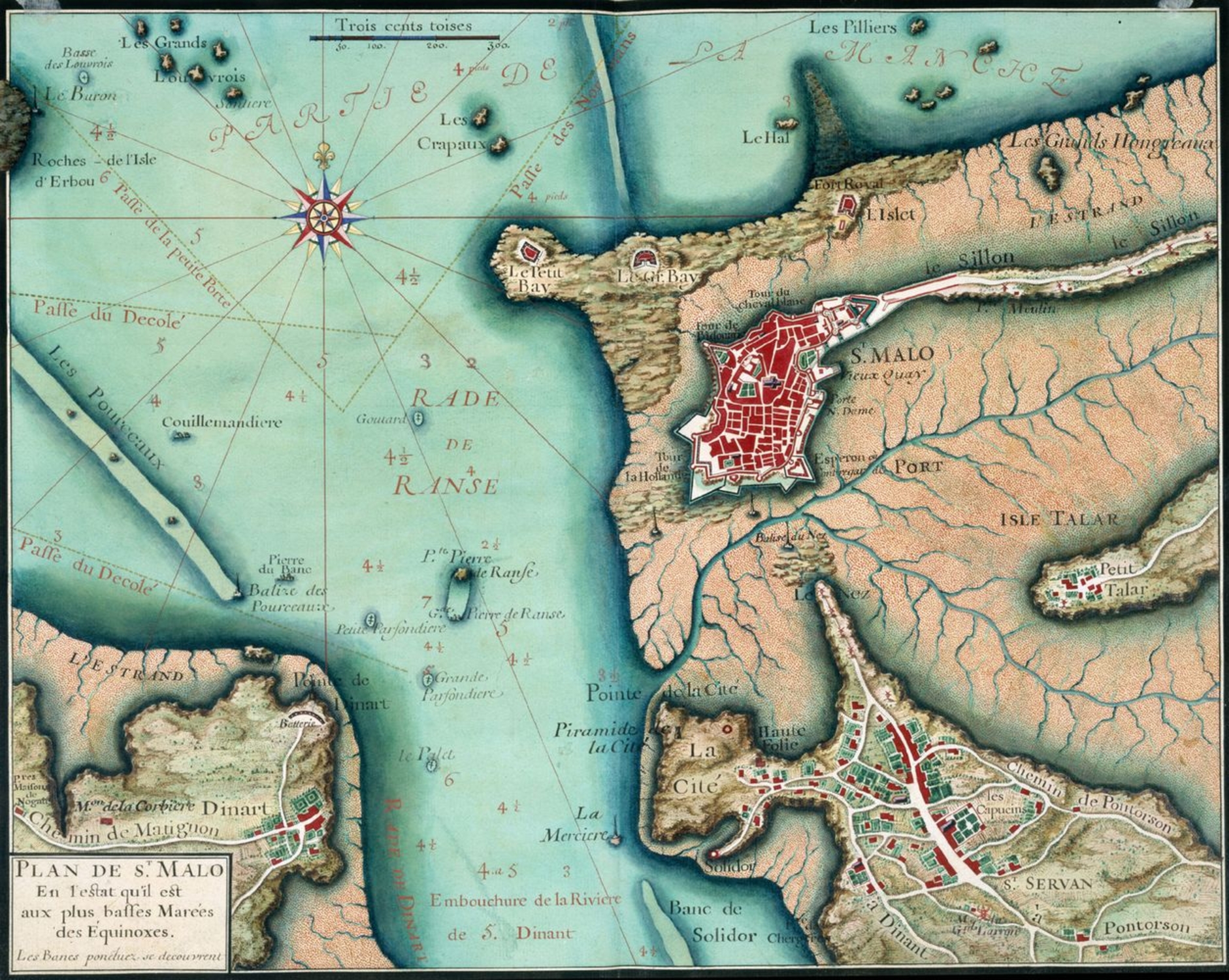
- Home
- The bay of Saint-Malo
- An underwater graveyard
Dotted with reefs and swept by extremely strong currents created by one of the highest tidal ranges in the world (more than ten metres), the coasts of Saint-Malo are well-known for being perilous. And yet for centuries, it was one of the most active ports in France, and in 1493, Charles X declared it to be "the handsomest port in our Kingdom."
Very often, in the late 17th and early 18th centuries, the city's port and roadway were crowded with vessels – each year, Saint-Malo witnessed more than 3,000 arrivals and departures of large and small ships, for a total annual trade tonnage of more than 100,000 tonnes. The combination of a hostile environment and the incessant movement of ships spelled misfortune for any number of vessels over the centuries. Every year, the port, which was accessible only by three narrow channels flanked by reefs – the Channel of the Small Gate, the Channel of the Grande Conchée and the Channel of the Décolé – witnessed wreck after wreck. Their names were recorded in the port's entry log, today in the Ille-et-Vilaine département archives: the Charmante, the Providence, the Saint-Jean Baptiste, the Paix, etc. Every type of ship – from 25-tonne coastal merchant vessels to major frigates fitted for commerce raiding, long-haul trading or Nova Scotia fishing – was lost off Saint-Malo, and it is no exaggeration to say that the city's coastal waters form the largest graveyard for ships anywhere in the world.



